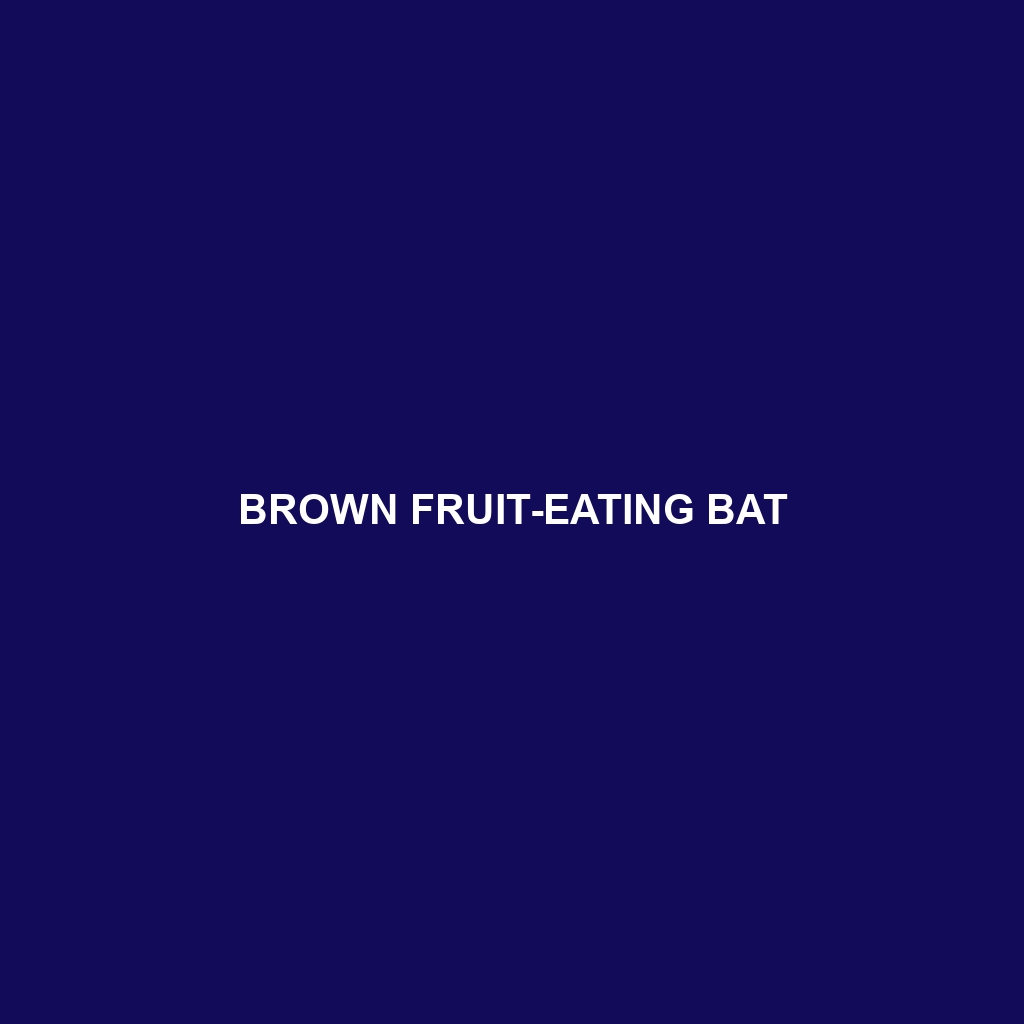Large Fruit-eating Bat (Scientific Name: )
Habitat:
The Large Fruit-eating Bat is primarily found in tropical and subtropical regions of Central and South America. Its preferred habitats include dense rainforests and moist lowland forests, where an abundance of fruiting trees provides essential food resources. These bats are particularly prevalent in areas with a consistent supply of ripe fruits, often inhabiting regions such as the Amazon Basin, coastal forests, and mountain rainforests.
Physical Characteristics:
The Large Fruit-eating Bat typically exhibits a wingspan of up to 1 meter (3.3 feet) and weighs between 400 to 700 grams. Its fur is usually dark brown or black, with lighter underparts, and has a characteristic snout that is broad and flat. The large eyes provide excellent night vision, which aids in foraging for fruit. Notable features include its elongated ears and a distinctive leaf-shaped nose, which enhances its echolocation capabilities.
Behavior:
These bats are primarily nocturnal, emerging at dusk to search for food. They often roost in large colonies in caves or tree hollows during the day. Social structures within these colonies can be complex, with interactions often marked by vocalizations and grooming behaviors. Large Fruit-eating Bats are known for their agility in flight, allowing them to navigate through dense foliage while foraging for fruits and nectar.
Diet:
The diet of the Large Fruit-eating Bat is predominantly frugivorous, with a particular preference for figs, bananas, and various tropical fruits. They play a crucial role in seed dispersal, as they consume fruits and excrete the seeds in different locations, promoting plant diversity in their habitats. Occasionally, they may also feed on nectar, aiding in pollination for certain species of plants.
Reproduction:
Breeding typically occurs once a year, with a gestation period of around 3 months. Females usually give birth to a single pup, which they care for diligently. The breeding season varies by region but generally occurs during the wetter months when food is more abundant. Young bats are capable of flight within a few weeks, quickly becoming independent.
Conservation Status:
As of the latest assessments, the Large Fruit-eating Bat is classified as vulnerable due to habitat loss and fragmentation, primarily caused by deforestation and agricultural expansion. Conservation efforts are essential to protect their natural habitats and ensure the survival of this important species.
Interesting Facts:
- The Large Fruit-eating Bat can consume up to 25% of its body weight in fruit each night.
- They are known to be important pollinators for many rainforest flowers, contributing significantly to ecosystem health.
- This species has been observed engaging in social behaviors such as communal grooming and vocal communication, showcasing their complex social structures.
Role in Ecosystem:
The Large Fruit-eating Bat plays an integral role in maintaining the health of its ecosystem. By feeding on fruits and dispersing seeds, they facilitate forest regeneration and biodiversity. Additionally, their feeding habits support the growth of various plant species, contributing to the stability of their habitats and the well-being of other animal species that depend on these plants for food and shelter.
